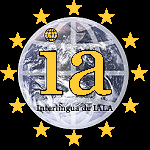 W
WBasque is a pre-Indo-European language spoken in the Basque Country, extending over a strip along eastern areas of the Bay of Biscay in Spain and France, straddling the western Pyrenees. It is classified as a language isolate, having no demonstrable genetic relation to any other known language, with the sole exception of Aquitanian, which is generally considered to be an ancestral form of Basque.
 W
WThis article is a detailed history of the Cherokee language, the indigenous American Iroquoian language native to the Cherokee people. In 2019, the Tri-Council of Cherokee tribes declared a state of emergency for the language due to the threat of it going extinct, calling for the enhancement of revitalization programs.
 W
WThe Dictionary of American Regional English (DARE) is a record of American English as spoken in the United States, from its beginnings to the present. It differs from other dictionaries in that it does not document the standard language used throughout the country. Instead, it contains regional and folk speech, those words, phrases, and pronunciations that vary from one part of the country to another, or that we learn from our families and friends rather than from our teachers and books. For DARE, a "region" may be as small as a city or part of a city, or as large as most of the country. Humanities magazine has described it as "a bold synthesis of linguistic atlas and historical dictionary", and William Safire called it "the most exciting new linguistic project in the twentieth century".
 W
WL. L. Zamenhof developed Esperanto in the 1870s and '80s. Unua Libro, the first print discussion of the language, appeared in 1887. The number of Esperanto speakers have increased gradually since then, without much support from governments and international organizations. Its use has, in some instances, been outlawed or otherwise suppressed.
 W
WThe Historical Thesaurus of English (HTE) is the largest thesaurus in the world. It is called a historical thesaurus as it arranges the whole vocabulary of English, from the earliest written records in Old English to the present, according to the first documented occurrence of a word in the entire history of the English language. The HTE was conceived and begun in 1965 by the English Language & Linguistics department of the University of Glasgow, who have ever since continued to compile the thesaurus. From the 1980s onwards the project was moved from paper-based records to a computer database.
 W
WHomeric scholarship is the study of any Homeric topic, especially the two large surviving epics, the Iliad and Odyssey. It is currently part of the academic discipline of classical studies. The subject is one of the oldest in scholarship. For the purpose of the present article, Homeric scholarship is divided into three main phases: antiquity; the 18th and 19th centuries; and the 20th century and later.
 W
WHungarian is a Uralic language of the Ugric group. It has been spoken in the region of modern-day Hungary since the Hungarian conquest of the Carpathian Basin in the late 9th century.
 W
WIn historical linguistics, the Ingvaeonic nasal spirant law is a description of a phonological development that occurred in the Ingvaeonic dialects of the West Germanic languages. This includes Old English, Old Frisian, and Old Saxon, and to a lesser degree Old Dutch.
 W
WInterlingua is an Italic international auxiliary language (IAL) developed between 1937 and 1951 by the American International Auxiliary Language Association (IALA). It ranks among the most widely used IALs and is the most widely used naturalistic IAL – in other words, those IALs whose vocabulary, grammar and other characteristics are derived from natural languages, rather than being centrally planned. Interlingua literature maintains that (written) Interlingua is comprehensible to the hundreds of millions of people who speak Romance languages, though it is actively spoken by only a few hundred.
 W
WMalay was first used in the first millennia known as Old Malay, a part of the Austronesian language family. Over a period of two millennia, Malay has undergone various stages of development that derived from different layers of foreign influences through international trade, religious expansion, colonisation and developments of new socio-political trends. The oldest form of Malay is descended from the Proto-Malayo-Polynesian language spoken by the earliest Austronesian settlers in Southeast Asia. This form would later evolve into Old Malay when Indian cultures and religions began penetrating the region, most probably using the Kawi and Rencong scripts, some linguistic researchers say. Old Malay contained some terms that exist today, but are unintelligible to modern speakers, while the modern language is already largely recognisable in written Classical Malay of 1303 CE.
 W
WThe Pre-Indo-European languages are any of several ancient languages, not necessarily related to one another, that existed in Prehistoric Europe and South Asia before the arrival of speakers of Indo-European languages. The oldest Indo-European language texts date from the 19th century BC in Kültepe, and while estimates vary widely, the spoken Indo-European languages are believed to have developed at the latest by the 3rd millennium BC. Thus, the Pre-Indo-European languages must have developed earlier than or, in some cases, alongside the Indo-European languages that ultimately displaced them.
 W
WThe Law Book of Žilina from 1378–1561 is a medieval law book of Žilina. The book contains a text of Magdeburg Law, its translation to mixed Slovak–Czech language and various law act records in German, Latin and Slovak–Czech.